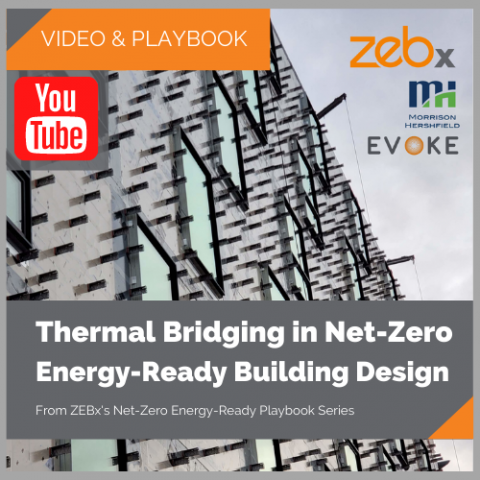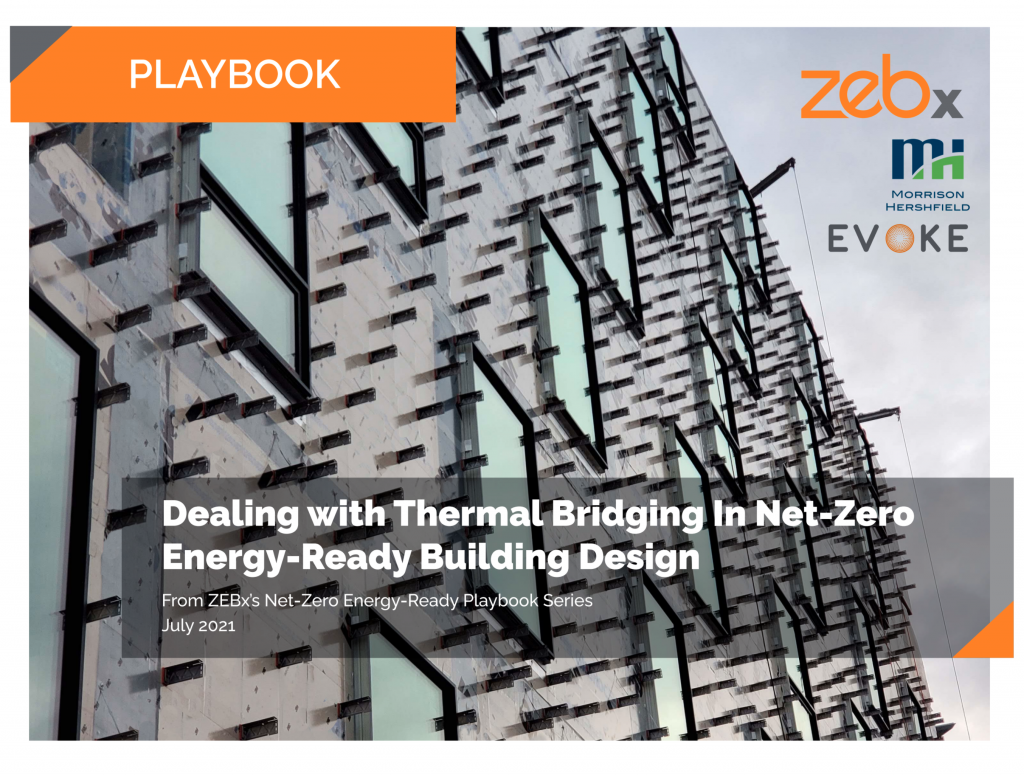
The ZEBx Annual Report 2020-2021
July 7, 2021
May 2021 Decarb Lunch Podcast: Building a High-Performance Home – Does it Cost More?
July 29, 2021
July 2021: Thermal Bridging In Net-Zero Energy-Ready Building Design
From ZEBx’s Net-Zero Energy-Ready Playbook Series
Overview
Minimizing thermal bridging through the building envelope is a key design aspect for achieving net-zero energy-ready (NZER) buildings. However, this can seem quite complicated for project teams, especially when much of the envelope is unknown during the early building design stage.
Finding the optimal envelope solution for thermal performance that also incorporates architectural intent, cost savings, constructibility and durability is only achieved when the entire project team is engaged to collectively meet these goals.
This playbook outlines good design practices for anticipating and dealing with thermal bridging in order to meet the expectations of the BC Energy [Step Code], Passive House or other NZER standards. The intent of this document is to provide guidance for design teams including developers, architects and consultants, to effectively tackle thermal bridging while meeting all project goals, not just thermal performance.
Why Thermal Bridging Matters:
In order to appropriately address thermal bridging on NZER projects, designers and owners need to understand its importance and why it cannot be ignored. Thermal bridging is important for two main reasons:
1. Environmental Impacts
Thermal bridging impacts energy consumption, design of HVAC systems, condensation control, occupant comfort, and embodied carbon.
2. Regulatory Requirements
Comprehensive thermal bridging calculations are required progressive energy codes and NZER standards. Not adequately addressing thermal bridging can impose constraints on other design aspects, including architectural features, window-to-wall ratios, heat recovery efficiency, air tightness requirements, insulation thickness, glazing transmittance, and options for heating and cooling systems.
Thermal Bridging In Net-Zero Energy-Ready Building Design






